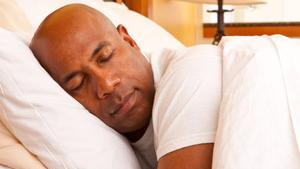
It’s been said that a man without testosterone is like a car without gasoline. Today more men suffer from low testosterone than ever before in history and it’s now considered an epidemic! Low testosterone (also called low T) can cause symptoms ranging from lack of sex drive, depression, and fatigue to irritability, memory loss, hair loss, and enlarged breasts. Once thought to be an unavoidable consequence of aging, low T can be reversed. By adopting a more testosterone-producing diet and lifestyle, while avoiding the common testosterone sabotages, it is possible to regain the vitality, sex drive, and energy levels that men are seeking. If lethargy, lack of sex drive, and crankiness plague your life and you think you may be suffering from low T, first ask your doctor for a blood test to check your hormone levels.
Many men whose doctors discover hormone levels below normal consider testosterone replacement therapy (TRT) in the form of synthetic gels, patches, pellets, and injections. In the United States, men spend over $3 billion dollars annually on TRT. However, that youthful rejuvenation comes at another price; an increased risk of stroke and heart attack. Just as hormone replacement therapy was shown to cause serious health risks to women in the early 2000s, men are now experiencing adverse reactions to TRT. Research published in early 2014 in the scientific journal PLoS ONE, funded by the National Institutes of Health, tracked 56,000 older and middle-aged men around the country who were prescribed testosterone. Men over 65 had twice the risk of suffering from a heart attack. Men under 50 with a history of heart problems have a three-fold increased risk of a heart attack during the first 90 days of TRT. In another study published last November by the Journal of the American Medical Association, scientists found that men taking testosterone therapy had a greater risk of dying from a heart attack and stroke than men who are not on the hormone replacement. As to why TRT affects the heart, scientists still don’t fully understand the connection, but it has been shown to lower a person’s HDL, or good cholesterol.
TRT can also cause an increase in red blood cells, which thickens the blood, leading to blood clots. A study published in the August 2013 issue of Clinical and Applied Thrombosis/Hemostasis found that blood clots may develop as quickly as one month after beginning testosterone drugs. Finally, the most common negative effect of TRT is testicular shrinkage and impotency. In spite of such warnings, testosterone prescriptions show no signs of decline. In fact, TRT has increased tenfold in the last decade, and is growing steadily at 10 percent per month!
Aside from aging being the number one cause of low T, and with many men now suffering from low T before their time, it begs to reason that much more is at play here than just the unwelcome workings of aging. While we might not ever turn back the hands of time, there are several things to be aware of that diminish testosterone levels, and that easily can be remedied.

During the past decade, while men’s T levels have rapidly been declining, there’s been a proportionate increase in the use of laptop computers. As the name states, these portable computers are designed to sit on a person’s lap. This creates heat near the testicles where testosterone is naturally produced, thus destroying sperm. Laptops also emit electromagnetic frequency (EMF) radiation, which can wreak havoc on a man’s testosterone level. The amount of radiation emitted from laptops can be measured with a device called a gauss meter. Many laptops show readings higher than 200 milligauss (600 times more than the 0.3 milligauss level that is considered safe).
In January 2012, the journal Fertility and Sterility published a study showing that men who have been exposed to a wireless internet-connected laptop showed a significant decrease in sperm motility and decreased fertility. The solution? Men should never put their laptop on their lap unless there’s a 12-inch cushion under the notebook, as this is about how far the EMF field transfers. EMF shields are also available to put under laptops, which protect the body from these dangerous frequencies. The one I use is called
Ninety-one percent of all men own a cell phone. Compare that to the year 2000, when just 28 percent owned one. Unlike landlines, which are almost obsolete, cellular phones are a major source of EMF because they are constantly searching for a tower signal. The EMF measurement for cell phones can reach 50 milligauss. Remember, ranges considered safe fall below 0.3 milligauss. While these EMF levels aren’t as high as laptops, it’s actually worse when you take into consideration that most men keep their cell phones turned on and by their side for more than 12 hours a day.
One theory as to why cell phones and laptops have such a negative effect on men could be due to the fact that the human body is composed of electrons that keep our electrical current flowing. EMF waves short circuit these signals. Since most men wear their phones in close proximity to their testicles–on a belt holster or in their front pocket–EMF can have a negative effect on sperm and testosterone production. Research published in PLoS ONE shows that cell phone radiation can decrease a man’s sperm count as well as the quality and motility of their sperm.
To keep cell phones from zapping testosterone, men should avoid storing their cell phone near their groin area, unless it’s on airplane mode. It’s best to store the phone far away from the testicles, either in a briefcase, car console, front shirt, or coat pocket. Keep in mind that EMF radiation is twice as strong when in an area where reception is bad. The more power your phone uses to search for a tower, the more radiation it emits. For additional protection, a company called Aires Technologies has created a microprocessor that neutralizes harmful radiation. Simply place this adhesive sticker on your cell phone for immediate EMF protection.

Touted as one of the healthiest foods, soy is found in everything from protein drinks and cereal to supplements and beef (soy-fed cattle). The fact is, men should not eat soy! Soy produces estrogen in the body and depletes testosterone production. In 2013, the University of Connecticut conducted a study that proved soy should be avoided at all costs! Men who consumed soy protein rather than whey protein for muscle recovery and growth experienced considerable reductions in their testosterone levels, as well as marked increases in levels of the stress hormone cortisol. Low T combined with elevated cortisol leads to a condition known as “feminization phenomenon,” a condition in men with symptoms ranging from nipple discharge and breast enlargement to decreased libido and hot flashes.
When men are exposed to common household chemicals (endocrine disrupters) testosterone levels can be diminished. The most common T-zapping chemicals are called xenoestrogens, which have been linked significantly to lowering testosterone because they imitate estrogen in the human body. While there are literally hundreds of items containing xenoestrogens, the most common, called bisphenol A (BPA), has the most negative impact on our health. BPA is used to make hard, clear plastic containers for items such as water bottles, microwave ovenware, eating utensils, milk and juice containers, as well as the plastic coating inside metal cans.
Some helpful tips on avoiding these manlihood-depleting chemicals include:
Another common xenoestrogen found in men’s grooming products is called parabens. If you see that word on a product label for shampoo, lotion, or shaving cream, toss it. A company called Jack Black offers many organic, paraben-free grooming products for men.
Now that we’ve discussed the common causes of low T, is it possible to undo the damage and replenish testosterone levels naturally? The answer is yes! Low T is reversible. Here are a few options right at your fingertips.
The research showing the dangers of synthetic testosterone replacement therapy (TRT) has come from the use of synthetic prescription testosterone. Another more natural low T remedy now becoming popular is called bio-identical testosterone therapy. This is generally a plant-based product produced in compounding pharmacies. What makes this type of replacement therapy a healthier option than the synthetic version is the ability for the body to recognize the natural structure of it. Using a hormone that is bio-identical is closer to resembling the testosterone produced in the testicles.
Big Pharma isn’t interested in bio-identical options because they cannot patent a naturally occurring product. The other reason is the price! Bio-identical testosterone can run as low as $40 per month compared to the synthetic prescription brand Androgel which can cost $900 per month! Some insurance companies are now covering bio-identical hormone replacement. In addition to bio-identical cream or gel, DHEA supplementation is another great low T remedy. DHEA, produced primarily in the adrenal glands, is often called the “mother hormone” because it is a precursor of testosterone and other sex hormones. While most doctors won’t recommend bio-identical hormone therapy over the synthetic versions, it is an alternative some are starting to consider, especially if you ask them specifically for one. To find a bio-identical practitioner in your area visit http://www.bioidenticaldoctors.com/.

Imagine coming home from a long day at work and leaving your car parked and engine running in the garage all night. While that engine revved all night, it would burn fuel. Likewise, when you don’t shut your engine off while you sleep, you’re burning your fuel, which causes low T.
According to a University of Chicago study conducted in May of 2011, a lack of sleep can have a profound effect on a man’s testosterone production. Low T can occur after only one week of shortened sleep. Study participants also reported a low sense of well-being as their blood testosterone levels dropped. The amount of sleep each person needs varies; however, the National Sleep Foundation suggests that adult males generally should have between seven and nine hours of deep restorative sleep per night. If you are not getting at least seven hours of deep restorative sleep, your testosterone levels could be in jeopardy. In fact, poor sleep quality and having less than seven hours’ sleep per night can slash your testosterone levels by more than 30 percent!
Being a chronic insomniac myself, I developed an all-natural sleeping aid that puts me in la la land every night, allowing me (and thousands of satisfied customers) to awake each morning feeling refreshed and full of energy. Learn more about Good-Night™ here.
Increasing testosterone takes high-intensity interval training, which includes short, intense bursts of exercise, followed by a longer recovery period. Exercises such as squats, bench presses, and seated rows, while using heavy weights, offer the most T-boosting benefits. Because fat tissue converts testosterone into estrogen, the less fat, the higher the T levels. Testosterone is at its highest forty-eight hours after lifting weights, according to a study at Baylor University. Moderate exercise doesn’t appear to increase the hormone, but neither does pushing yourself too hard at the gym. The key to increasing the hormone is high-intensity exercise, followed by rest and recuperation. Unfortunately, a slow one-hour jog will not boost testosterone levels. And, research shows that marathon running and endurance sports, such as long-distance cycling, can actually lower testosterone levels.
Try this testosterone-boosting exercise regimen:
While testosterone declines naturally with age, internal belly fat will speed up this reduction even more. Therefore, losing weight can be a natural way to boost testosterone levels. According to research presented at the 2012 Endocrine Society’s 94th Annual Meeting in Houston, obese men who lost an average of seventeen pounds saw their testosterone levels increase by 15 percent. Also presented was evidence that even slightly overweight men can become prediabetic, leading to a significant deficit in testosterone levels. In fact, weight loss among men with prediabetes can increase their testosterone levels by almost 50 percent!
It’s important to note, weight loss is not the same as exercise. One of the biggest misconceptions out there is we can eat what we want and burn off those unwanted pounds at the gym. Weight loss is 80 percent diet and 20 percent exercise. We’ve all seen that obese man at the gym. He’s there religiously, sometimes daily, on the treadmill sweating profusely, giving it his all! Fast forward six months, and there he is, still obese, running on the treadmill, giving it his all. The reason people (even gym rats) struggle so much with losing weight is because they don’t change their diet.
Are you overweight? Use this rule of thumb to figure it out: Your waist size should be half your height in inches.

What you eat plays a tremendous role in testosterone production. Foods like cauliflower, cabbage, and broccoli contain high levels of indoles, a food compound that has been shown to reduce the bad estrogen in our bodies that decreases testosterone levels. Also, eat “good” fats, the monounsaturated and omega-3 types found in avocados, nuts, and oily fish like wild-caught salmon, trout, mackerel, and tuna. A study in the Journal of Applied Physiology found that men who ate these foods had the highest testosterone levels. In addition, include foods high in the mineral zinc, including oysters, poultry, beans, crab, lobster, and whole grains. Men with low zinc levels are more prone to developing low T. Take note, processed foods, sweets, dairy, red meat, and alcohol deplete testosterone levels and lead to belly fat!
The old saying, “Use it or lose it” is true. When a man has intercourse it creates chemical reactions in his body which, in turn, creates more testosterone in preparation for the next sexual encounter. Men, share this article with your significant other, which shows that by giving you more needed sex, it will keep you from losing your hair, gaining weight, being irritable, and keep you from falling asleep on the couch before dinner.
Having low T isn’t a death sentence! Adopt a testosterone-producing diet and lifestyle and avoid common testosterone sabotages, and men can regain their vitality, sex drive, and energy levels.
About the Author
Dr. David Friedman is the author of the award-winning, #1 national best-selling book Food Sanity, How to Eat in a World of Fads and Fiction. He's a Doctor of Naturopathy, Chiropractic Neurologist, Clinical Nutritionist, Board Certified Alternative Medical Practitioner, and Board Certified in Integrative Medicine. Dr. Friedman is a syndicated television health expert and host of To Your Good Health Radio, which has changed the face of talk radio by incorporating entertainment, shock value, and solutions to everyday health and wellness issues.
Read more hereFOODSANITY.COM .